A trip to the Gambia may not be top of the list for winter sun destinations however at just 6.5 hours from the UK and with no time difference, the smallest mainland African nation has much to offer travellers who desire something different. Whether you are a sunseeker, nature lover, anthropologist or adventure junkie, this tiny country packs a punch. Sun worshippers can bask under bright blue skies to the soundtrack of crashing waves and melodic music floating on the breeze. Naturists delight in the smorgasbord of monkeys, crocodiles, hippopotamus and other wildlife both in country and in neighbouring Senegal and cultural enthusiasts can explore the fascinating local culture. From visits to local villages and schools, to strolls through vibrant, bustling markets exploding with colour, this country offers a heady mix of attractions. Here are just five fascinating reasons to visit Gambia on your next tropical holiday.
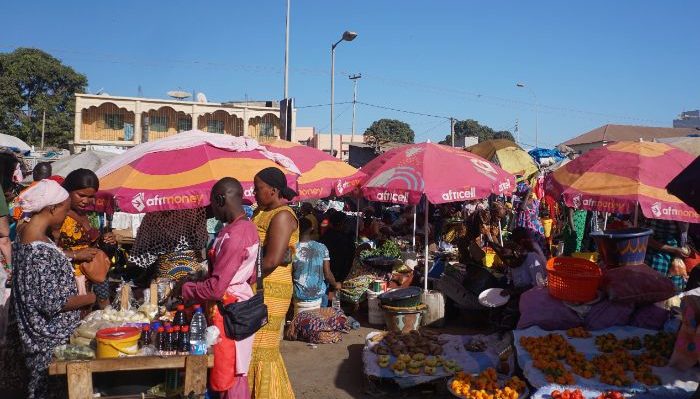
5 reasons to visit Gambia
Vibrant markets
A visit to a market is an absolute must and a strong reason to visit to the Gambia. Contrary to our expectations, locals largely ignore Western tourists in the markets as they focus on selling food and vegetables to Gambians doing their daily shop. The lack of refrigerators and electricity in the Gambia mean that it is commonplace to shop daily meals so markets offer a true glimpse into Gambian life.
I recommend you visit both a fruit and vegetable market and the fish market as both provide a fascinating insight into life in the Gambia.
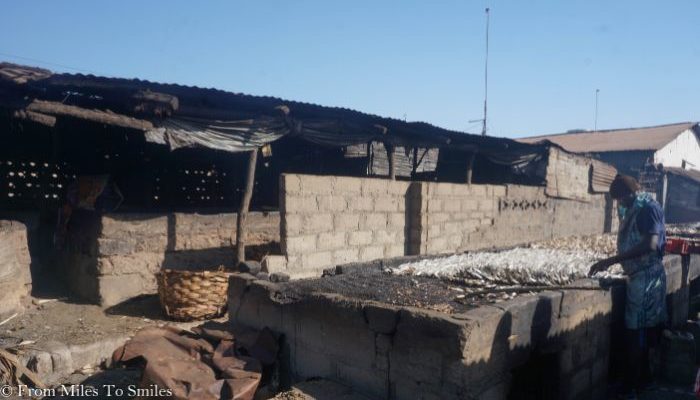
Tanji fish market
You can smell Tanji fish market long before you can see it. Dusty pathways lead to alleyways lined with heated plateaus on which fish smokes. Flies swarm everywhere, attracted by the piles of rubbish and discarded fish parts, and it is hard not to be appalled by the stench and squalor.
The aroma of smoking fish fills the air and women carrying babies in colourful slings greet us as we pass. A plethora of different fish cram onto the plateaus and as we head towards shore, activity becomes even more frenetic. Fishermen haul huge nets up the beach into brightly painted fishing boats whilst locals flock to offload their wares from boats that bob in the shallows. They fling their catch into wheelbarrows, which they push through the crowded market to rudimentary stalls or waiting vehicles. Any unused fish ends up in storage in ancient rusting refrigerators now converted into huge cool boxes.
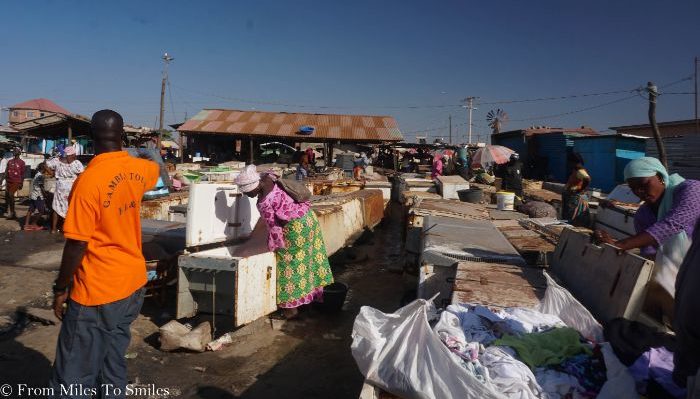
Local hotels and restaurants buy up most of the haul before it reaches shore but women in vibrant traditional dresses squat above small tables and upturned buckets on which they display the leftovers. They smile and joke with passersby, trying to entice them to buy their wares and we witness animated negotiations taking place. Note, you may wish to don a face mask before entering.
Fruit and vegetable market
Back in Serrekunda, we cross a dusty road to enter a pulsing market place, a riot of noise and colour. Flies swarm around stalls as vendors cleave meat with violent machete swings, the thuds echoing around the market. We marvel at the pungent aromas of fish and vivid displays of colourful vegetables, meats and spices.
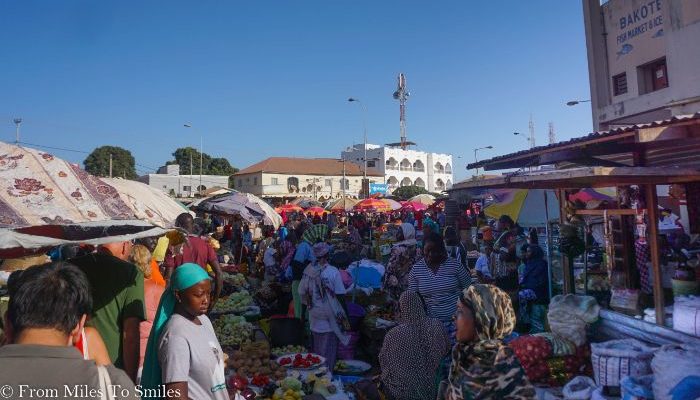
Grubby aisles seem to masquerade as fashion runways. Intimidating women in exotic outfits of bright colours and bold prints glide through the market. Many have babies strapped to their backs with strips of fabric wrapped around their bodies (almost like a kangaroo in reverse). Some even manage to precariously balance produce on their heads whilst simultaneously navigating the crowded pathways.
Women squat on low stools by their vegetables. They chatter in the heat and banter with our guides whilst men doze in the shade. A girl, barely more than a child herself, breastfeeds openly. She eyes us suspiciously as we pass, swept along by a sea of people with more pressing matters on their hands than tourism.
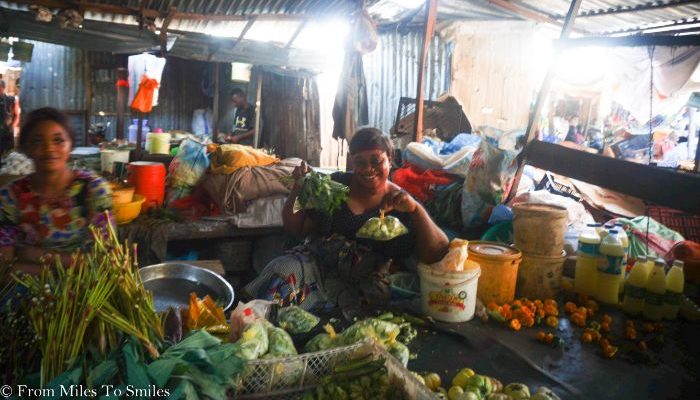
In the Albert Market in Banjul, we have a similar experience but these women seem more interested in interacting. They coquettishly encourage us to take their pictures and excitedly peer at the tiny camera screen eager to see their pictures. Grubby children follow us curiously until the stern voices of parents and grandparents force them away. The markets are truly a lens into another life.
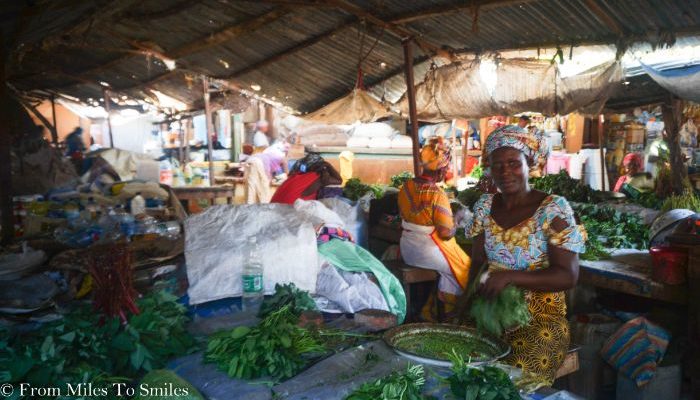
Top tip
If you visit a market, take extra care of your valuables as the crowds and jostling are a pickpockets paradise. Use an hidden belt such as this one from Amazon which costs just £7.49. Although it looks tiny, it is made of stretchy material. It can fit both a phone and money and is invisible under a loose-fitting top.
Idyllic beaches
With endless days of sunshine in the dry season (between November and May), tropical beaches are a huge draw for sun starved Westerners. The beaches do not disappoint with long swathes of golden sand merging into forest-clad shores. Even in more commercial areas, resorts are low lying and blend into the vegetation harmoniously. Local bars and restaurants, often little more than wooden shacks, nestle between resorts, and palm trees tower magnificently above.
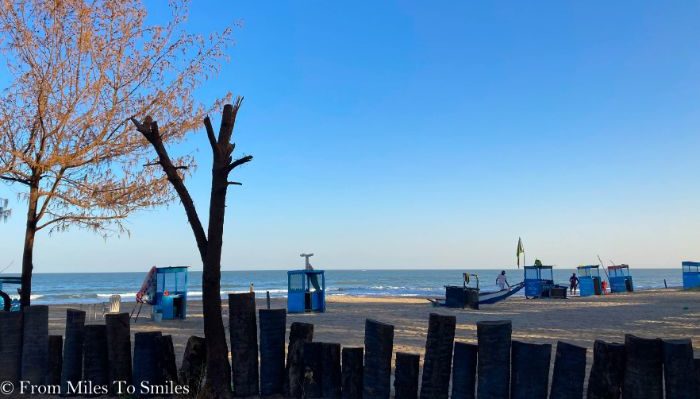
At dusk, the beach comes alive as locals flock to the coast to engage in exuberant games of football. Women cluster in the shade with children, chattering to friends whilst feasting on home-made picnics or local juices. Thundering Atlantic waves crash onto the shore and hawkers in colourful headdresses and full-length vibrant skirts ply their wares. The sunsets are also pretty spectacular!
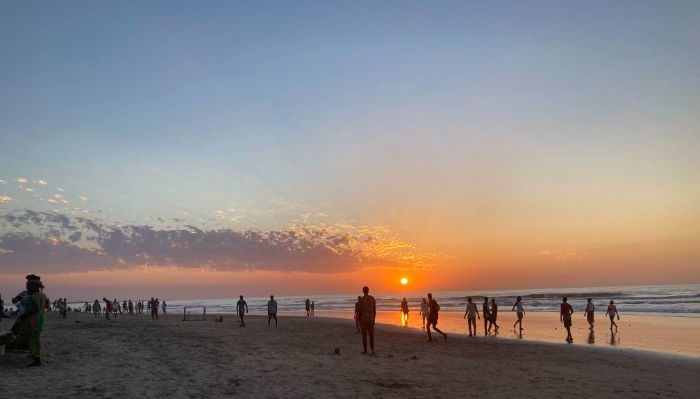
Be careful to observe beach flags which indicate whether it is safe to enter the water. There are strong undercurrents along this stretch of coastline and red flags are frequent.
Traditional village life
Even if you do not visit the Gambia with culture in mind, it would be a real shame to visit and not discover anything of traditional village life. Take a guided tour to a local village where you can experience the education system first-hand and gain a snapshot into Gambian life. Beaming smiles and hollers from kids as you pass may well be the highlight of your trip.
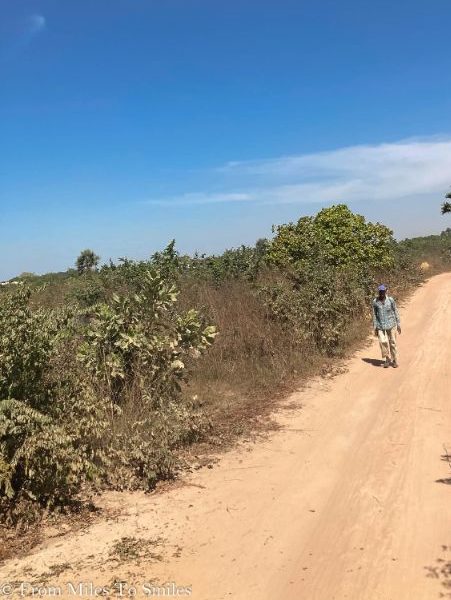
Our truck trundles down narrow dusty roads, pockmarked with potholes, passing through crop fields and a ramshackle villages. Kids line the road, chasing after us with squeals of delight, their beaming smiles accompanied by shouts of hello. Many wear tired old football tops in homage to their favourite teams. Football is clearly a big deal in the Gambia – even tiny villages with basic facilities show premier league football games on communal TVS. Chalk boards indicate upcoming fixtures and I am sad that we do not get to witness a games as I suspect it might be a raucous affair.
As we slowly navigate around craters in the road, we watch kids carrying firewood, donkeys grazing by the roadside and cows drinking from murky water. We pass small vegetable crops and spy children shyly peering from behind corrugated fences, a sweet burning smell our constant companion.
Yuma
We eventually reach the village of Yuma where a dilapidated collection of shacks huddle under the shade of large baobab trees on a sandy patch of land. It is traditional in the Gambia for families to live in compounds with extended family and other community members.
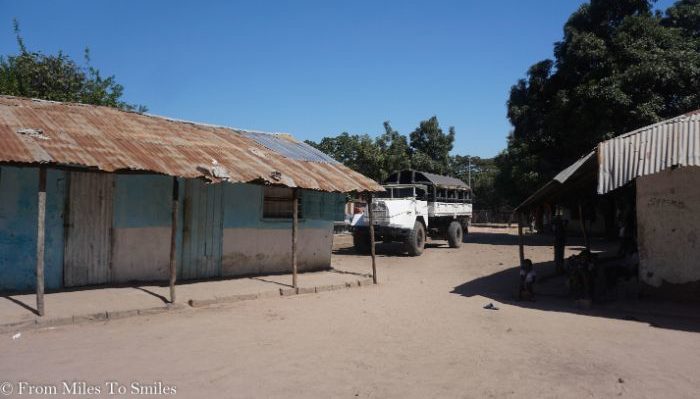
We visit the house of one family where 15 people live in a small 5 room compound. The tiny house is built with mud walls and a corrugated roof and looks ready to collapse at any time. As we survey the drooping ceilings, our host horrifies us with stories of wet weather. Rains force the family to flee to neighbouring properties as water gushes through holes in the roof. It soaks piles of clothes and schoolbags and pools around sodden mattresses. In windy weather, the threat of collapse is so great that the family must sleep outdoors.
We enter into a gloomy corridor that dissects the main building. On one side are three box sized rooms, in which as many as 4 children share a blow-up mattress. On the other side of the compound, a large suite remains vacant in deference to their late uncle.
The kitchen is in a separate small, tumbledown shed at the back of the house. Women cook hunched over hot plates on the floor using charcoal. They certainly do not have it easy in the Gambia. Don’t be fooled either – their responsibilities extend beyond the home. Many have full time jobs elsewhere in addition to the burden of household chores.
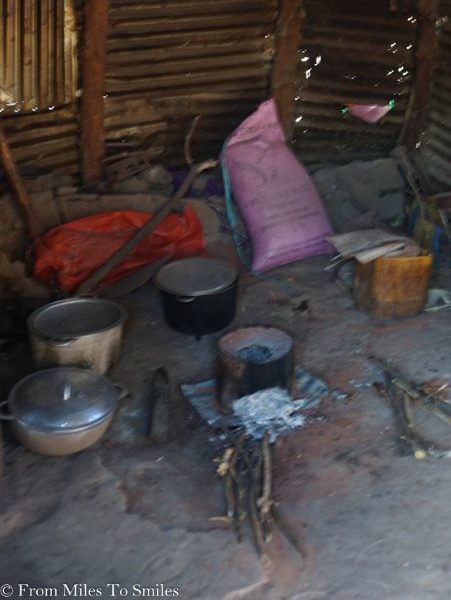
Village hospitality
After our tour, we take a seat on benches in the shade. Our hosts offer us samples of firewater, a local brew with 35% alcohol content. Brewed from palm tree oil mixed with sugar and yeast, it burns our throats as we politely sip the offered beverage. You may also have the pleasure of tasting palm wine which also comes from the palm tree but is much weaker. When we arrive however our hosts have extinguished their entire supply celebrating Christmas!
As we gaze around the dusty clearing, we listen to our guide explain more about family life in the Gambia. He blames social media and migration for the disintegration of traditional family values and cultural traditions. Although children enjoy a happy childhood in the villages, social media gives them a glimpse into another world and wreaks disillusion. Many youngsters migrate to the cities or further afield to other African or European countries. These aspirations can be deadly. Many perish as they make the torturous journey overland and by sea seduced by tales of the promised land and exploited by traffickers. Those that survive fare little better and find new homes in refugee camps with conditions as wretched as those they hoped to leave behind.
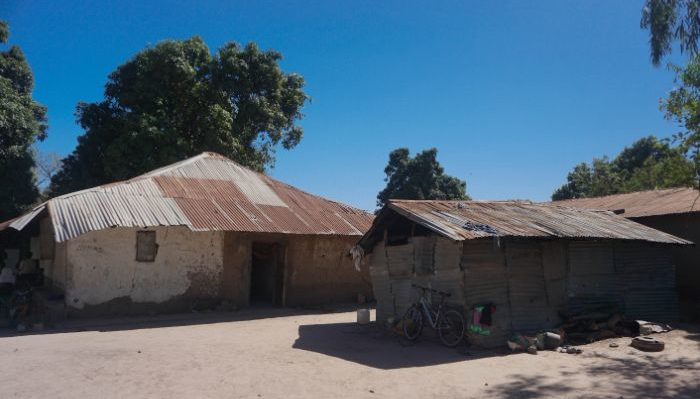
As we ponder such horrors, the children become bolder. Until now, they have remained huddled on the porch timidly watching us. As we prepare to leave however they pose cheekily for photos, their arms draped around one another protectively.
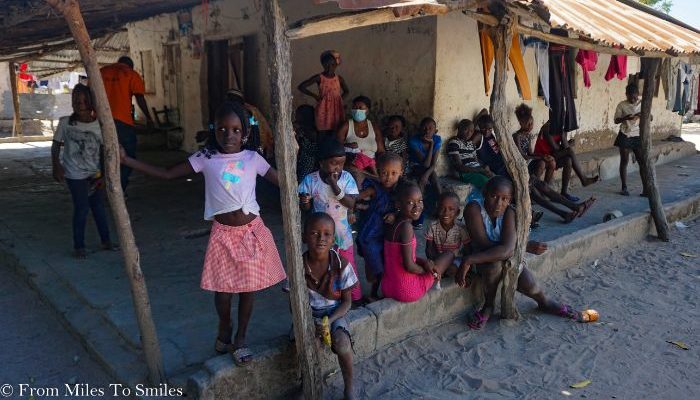
Village school
On our return, we pause to visit a local school and learn a little about the education system. This tiny school offers free classes to around 400 children between the age of 6 and 19. It is abundantly clear that it is in desperate need of investment with a lack of functioning tables and chairs. Stepping into a classroom is like a trip into the past. A huge chalk board takes up a wall in front of a scattering of battered chairs but it is far from joyous or inspirational.
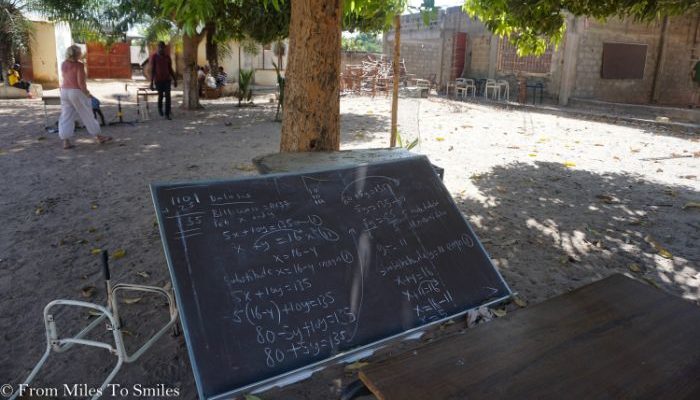
Many classes take place in the grassy courtyard in the shade of large trees, surrounded by litter and rubble. There simply isn’t enough space for all the children!
Soon our visit attracts a group of local children who shyly creep into the courtyard and gather demurely underneath a tree. They stare unembarrassedly at us as we wander around but are happy to pose once the cameras appear.
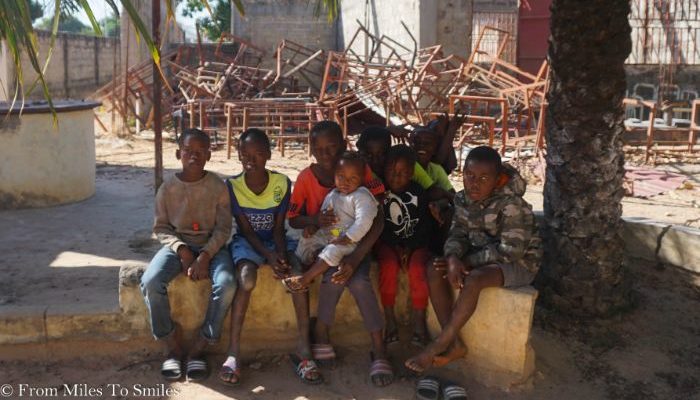
Banjul
Banjul may be the capital but it is more like a sleepy village. Litter tumbles sleepily down dusty streets and rusting corrugated colonial buildings resemble something from a war zone. Many buildings seem abandoned, sandwiched between an occasional school or stores selling spices, fruit and fabric. There is little sign of life outside the Albert Market which heaves with activity. Although it lacks much in the way of tourist attractions, it is nevertheless worthy of a brief visit.
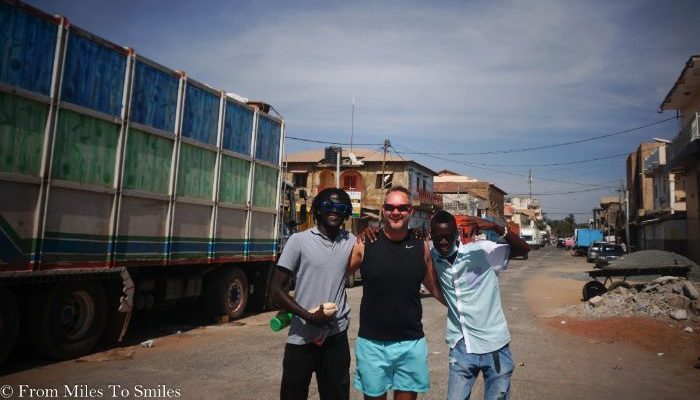
Bird watching
The Gambia squeezes onto a narrow sliver of land either side of the Gambia river. Surrounded by Senegal on all but the West Coast it is prime migration territory. Birds flock to Gambia from the North in the autumn, attracted by the first strip of greenery after a long flight over the desert. After these birds depart in Spring, a migration from the South coincides with the rainy season. In June and July birds from the equatorial regions of Africa come to the Senegambia Valley to breed. These migrations result in huge diversity of birds as over 560 species of birds have been recorded in the Gambia. Birdwatchers will be in heaven but even non enthusiasts, can enjoy the entertaining avian antics during a visit to the Gambia.
Our personal bird sanctuary
Of particular delight were the rowdiness of flocks of small, sparrow like green breasted birds. Each morning around 7.15 the high-pitched sound of twittering breaks the peace. Thousands of birds awake from their slumber desperate to chat. For around 30 minutes, their sound gradually builds to a crescendo before they jet off en masse.
At dusk, they return in swarms swooping in like cruise missiles, so fast they are just a blur. Those blobs to the left of the tree below are actually birds. You can see how blurry they are so this should give you some idea of their speed. As we repeatedly navigate the rickety bridge across the water inlet I find it miraculous that they do not crash into us. They launch themselves into one tree before flitting to another tree close in an elaborate display. But as darkness falls, they gradually quieten before they repeat the whole charade the next day.
Each evening, as we pass the tree, we amuse ourselves trying to spot the sleeping birds. Their little round balls of green plumage hide in the leaves, safe from vultures gliding above.
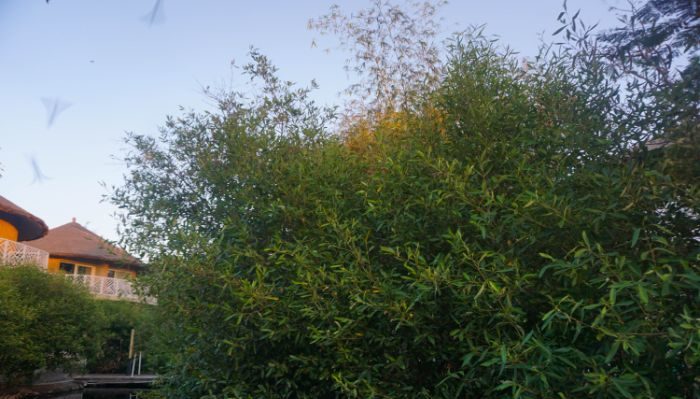
Wildlife
Apart from birds, you can also visit copious monkeys, chimpanzees, hippopotamus and baboons but for big game you will need to head to neighbouring Senegal. Keep your eyes peeled as wildlife is not just in reserves. We spotted a large monitor lizard basking in the shade of a palm tree and red colobus monkeys scampering around the grounds of the Senegambia hotel.
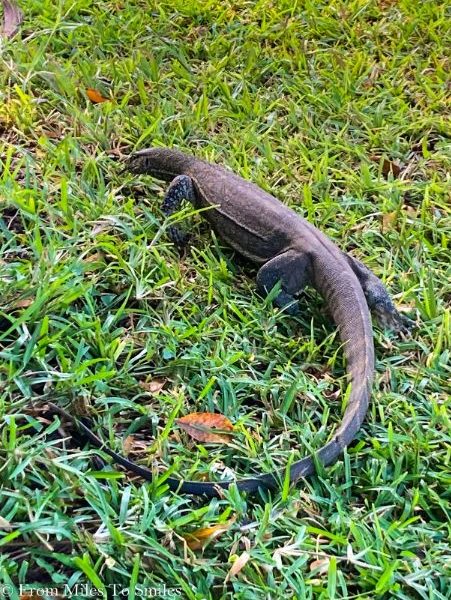
On another occasion, we spotted these huge vultures. They look pretty terrifying to me so no wonder those tiny sparrows hide out in trees at night!
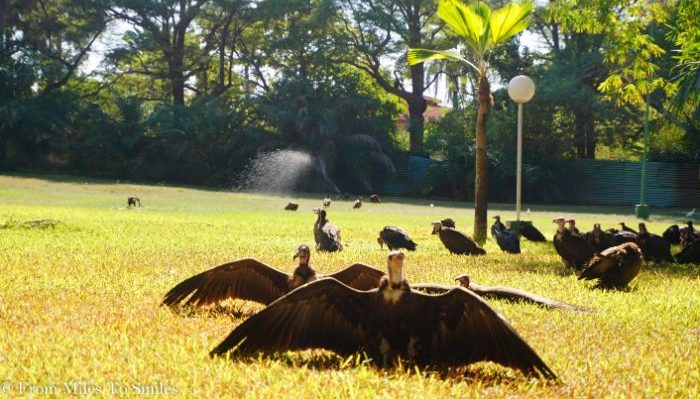
The monkey forest
If you don’t want to leave wildlife spotting to chance, head to the Bijilo Forest, commonly referred to as the Monkey forest. It is a short walk south of Serrekunda on the Serrekunda highway. A decrepit sign indicates a right-hand turn which leads down a dusty track towards the sea. You enter through a narrow doorway cut into high walls and follow a winding path through the forest. Entry costs 150 per adult (around £2 each).
Although the forest looks unkempt with decaying palm fronds littering the ground, monkeys hide in the trees and foliage keeping an alert eye out for the next meal. They curiously saunter onto the path, watching you intently, waiting for you to open a bag that might contain an easy snack for them.
Be sure to look up every now and then as we saw one monkey leap onto a branch and instantly deposit both number 1s and 2s on the ground below. You would not want to be the unsuspecting recipient of that little gift.
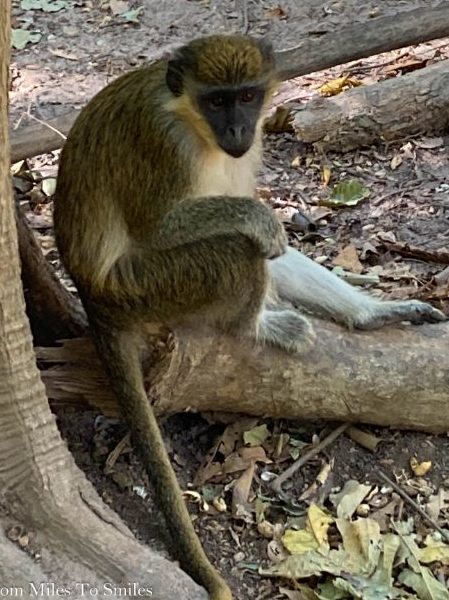
Note, that although staff at the monkey forest will try to encourage you to buy peanuts, it is not wise to feed them. They are wild animals that can act unpredictably and can transmit rabies to unsuspecting tourists.
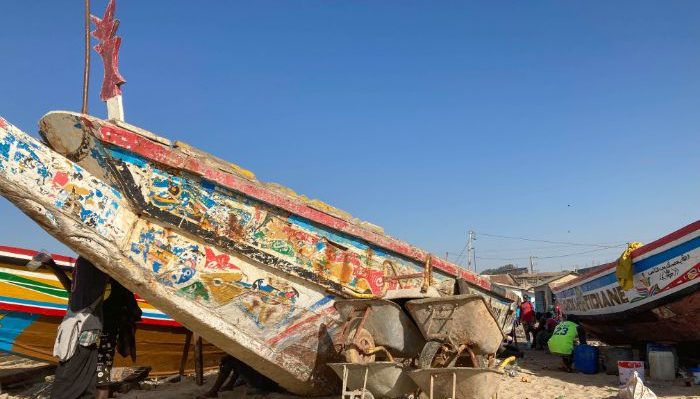
Final comments
If you are sat at home reading this on a gloomy winter day pondering a winter sun break, the Gambia could be a fantastic option for you. With no time difference, a reasonable flight time, affordable prices and cultural diversity, it has much to offer.
Hotel and flights
We stayed at the Balafon Beach Hotel in Kololi which is a 4 star but a little on the basic side.
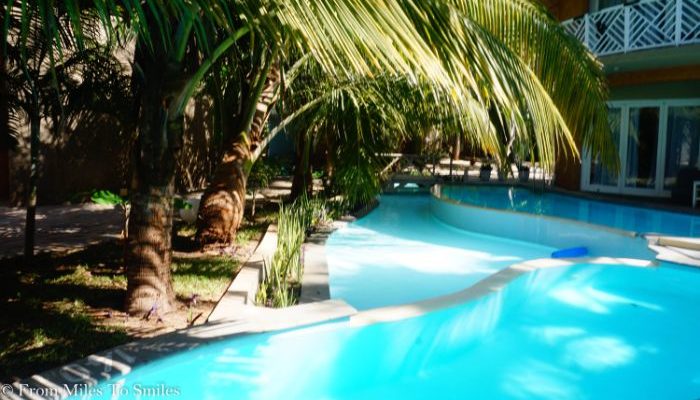
Other more luxurious options include the African Princess Beach Hotel which is close to the nighlife of the Senegmabia strip. The Sunprime, Tamala Beach is another option but is a little further from the strip.
We flew with Tui from Manchester Airport. The airline is the only UK airline to fly direct to the Gambia however ensure you prepare beforehand. Despite a 6.5 hour flight time, the planes do not have entertainment and all in service meals and drinks are extra. They do however have USB ports in the seats so you can use your own electronics.
Staying safe in the Gambia
If you now are ready for a trip to the Gambia, discover more useful tips in this post ‘is it safe to visit the Gambia?’
 From Miles to Smiles Stylish travel for professionals seeking luxury at affordable prices
From Miles to Smiles Stylish travel for professionals seeking luxury at affordable prices

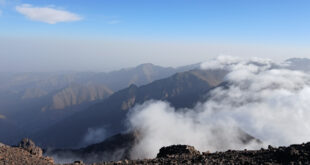
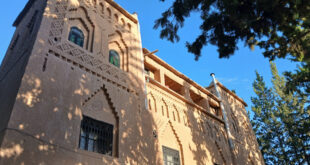
Neat review. Looks hardcore. I assume the currency exchange rate is favorable and the weather sounds good so what else do you need.
Thanks Dan. Yes roughly 70 Dilasi to the £ and a beer would typically cost between 100 and 150. A meal for two would be about £15 so pretty reasonable and great good too. Thanks for stopping by and commenting.
Nice blog about a trip to the Gambia. I love traveling and I follow your blog.
That’s great to hear thanks